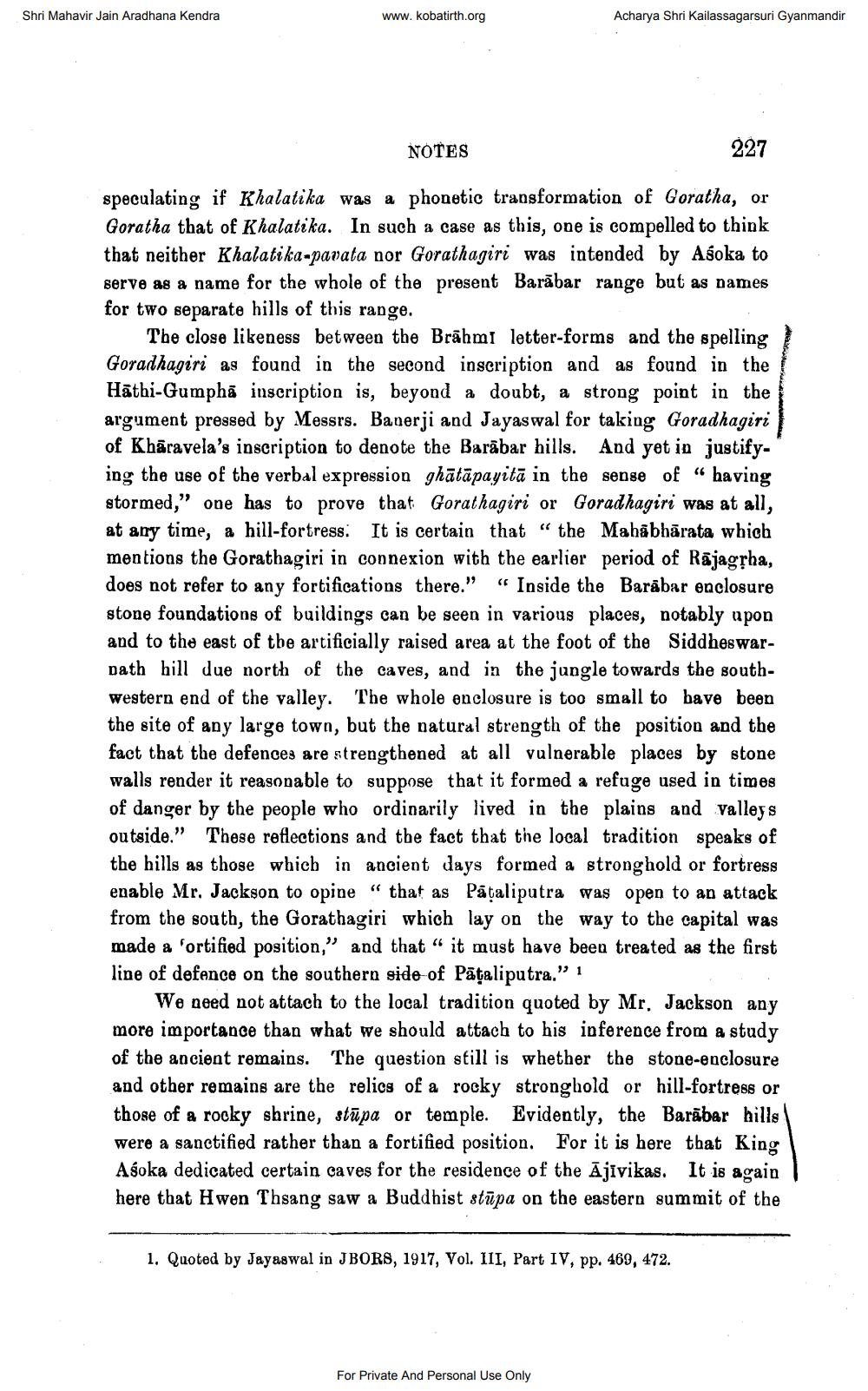________________
Shri Mahavir Jain Aradhana Kendra
www.kobatirth.org
Acharya Shri Kailassagarsuri Gyanmandir
NOTES
227
speculating if Khalatika was a phonetic transformation of Goratha, or Goratha that of Khalatika. In such a case as this, one is compelled to think that neither Khalatika-pavata nor Gorathagiri was intended by Asoka to serve as a name for the whole of the present Barābar range but as dames for two separate hills of this range.
The close likeness between the Brāhmi letter-forms and the spelling Goradhagiri as found in the second inscription and as found in the Hāthi-Gumphā inscription is, beyond a doubt, a strong point in the argument pressed by Messrs. Banerji and Jayaswal for taking Goradhagiri of Khāravela's inscription to denote the Barābar hills. And yet in justifying the use of the verbal expression ghātā payitā in the sense of “having stormed," one has to prove that Gorathagiri or Goradhagiri was at all, at any time, a hill-fortress. It is certain that “the Mahābhārata which mentions the Gorathagiri in connexion with the earlier period of Rājagrha, does not refer to any fortifications there." “ Inside the Barābar enclosure stone foundations of buildings can be seen in various places, notably apon and to the east of tbe artificially raised area at the foot of the Siddheswarpath hill due north of the caves, and in the jungle towards the southwestern end of the valley. The whole enclosure is too small to bave been the site of any large town, but the natural strength of the position and the fact that the defences are strengthened at all vulnerable places by stone walls render it reasonable to suppose that it formed a refuge used in times of danger by the people who ordinarily lived in the plains and valleys outside." These reflections and the fact that the local tradition speaks of the hills as those which in ancient days formed a stronghold or fortress enable Mr. Jackson to opine “ that as Pataliputra was open to an attack from the south, the Gorathagiri which lay on the way to the capital was made a fortified position," and that " it must have been treated as the first line of defence on the southern side of Pāķaliputra." 1
We need not attach to the local tradition quoted by Mr. Jackson any more importance than what we should attach to his inference from a study of the ancient remains. The question still is whether the stone-enclosure and other remains are the relics of a rocky stronghold or hill-fortress or those of a rocky shrine, stūpa or temple. Evidently, the Barābar hills were a sanctified rather than a fortified position. For it is here that King Asoka dedicated certain caves for the residence of the Ājivikas. It is again here that Hwen Thsang saw a Buddhist stūpa on the eastern summit of the
1. Quoted by Jayaswal in JBORS, 1917, Vol. III, Part IV, pp. 469, 472.
For Private And Personal Use Only




